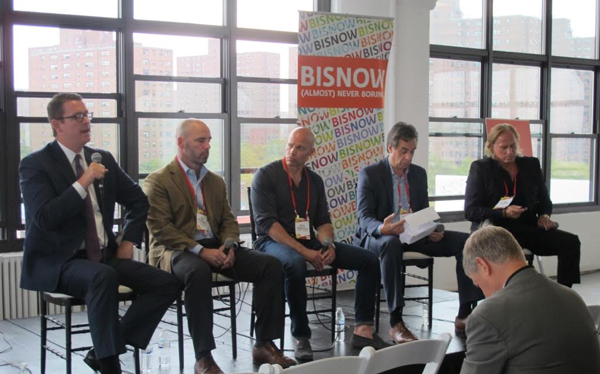Trending
It won’t be Williamsburg: Developers envision a gentrified South Bronx
Real estate players discussed their projects and the future of the borough's housing market

UPDATED, 5:31 p.m. September 15: If you ask Robert Nelson, gentrification isn’t a bad thing. It’s just misunderstood.
“I think there are a lot of myths out there about gentrification, and there are a lot of things that gentrification does that helps neighborhoods,” the head of Nelson Management Group said. “Back in my property in Soundview…there are some of my residents who literally jump into the car and drive into Manhattan to go to the Whole Foods on the Upper West Side.”
“To the extent that we’re able to come in and improve a neighborhood, and more stores are coming in to service that neighborhood,” he continued, “aren’t we thus providing more services?”
Nelson and other Bronx developers spoke about the residential future of the borough at Bisnow’s Bronx State of the Market event in the Bruckner Building on Thursday morning. Although they do see a transformation ahead, they maintain it will remain much more working class than neighborhoods like Williamsburg.
Daniel Parker of Hodges Ward Elliott, which brokered a $140 million investment sale last March for a 38-building multifamily portfolio in the borough, said the job market in the Bronx would keep things working class. It is mainly seeing growth in the healthcare and teaching fields, and it benefits from a stable base of municipal employees as well.
“It might not equate to $4 cups of coffee,” he said, “but it is equating to pretty large scale rent growth.”
Somerset Partners founder Keith Rubenstein, whose massive waterfront project has already attracted a fair amount of controversy over claims of gentrification, acknowledged that his development was luxurious to a certain degree but maintained that he viewed it overall as workforce housing. He described the Bronx as sorely lacking this type of housing.
“There’s been a big, big, big push by the local government to build supportive housing and to build affordable housing,” he said. “They’ve done an amazing job doing that, but without a diversity, without a place for young [workers] that are professional to live, then you’re missing something.”
Somerset and the Chetrit Group are in the market for a construction loan of up to $500 million for their project, and although this would be the largest in the borough’s history, Rubenstein said he was very confident in the risks the company had taken and that there would be a market for their apartments.
Dan McInerney of Taconic Investment Partners, which owns Eastchester Heights in the Bronx, rounded out the panel.
Parker maintained that, rather than gentrifying itself, the Bronx would be the last refuge for people fleeing from other gentrifying neighborhoods.
“In the gold rush, there are two ways to make money: you can either pan for gold or you can sell shovels,” he said, “and the Bronx is a lot like selling shovels because…by buying in the Bronx, you are effectively saying, ‘I don’t care which neighborhood gentrifies next throughout the five boroughs. Whatever it is, those people are coming to me because I’m going to offer the last affordable place.”
Correction: An earlier version of this story misattributed a quote to Robert Nelson.




